Why can’t some parliamentary select committees get female witnesses?
In their nearly eponymous 1995 hit, Reverend Black Grape, I’m a Celebrity runners-up and Bargain Hunt cheats, Black Grape, asked ‘Can I get a witness?’ In 2019, why is it that some select committees seemingly find it difficult to get female witnesses to give evidence at their sessions? Marc Geddes, Mark Goodwin, Stephen Holden Bates and Steve McKay find that some of the answer may well be found in the gendered make-up of the committees themselves.
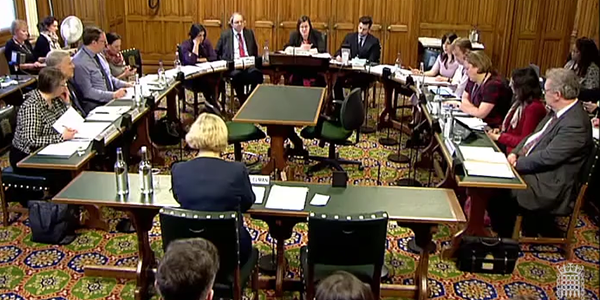
Public Accounts Committee session. Picture: Parliament TV/Parliamentary Copyright
Possibly lost in all the hullabaloo of that Brexit-thingy, the Liaison Committee released updated data on the gender balance of select committee witnesses just before Christmas. Although there has been a slight upwards trend in the proportion of female witnesses over the three parliamentary sessions during which data has been collected, the overall picture – as with the proportion of female MPs – remains pretty depressing. Only a third of the total number of witnesses have been female during the current parliamentary session and this is only five percentage points higher than for the 2015–16 parliamentary session when official records began. The situation is slightly more encouraging when we focus on discretionary witnesses – individuals that committees invite to appear before them – where just under two-fifths (or more accurately, just over four-elevenths) have been women during the current parliamentary session so far, an increase of eight percentage points from 2015–16.
As you would expect, this overall picture masks some wide discrepancies at the individual committee level both for discretionary and non-discretionary witnesses. The range in the percentage of total female witnesses for different committees went from 12% to 69% in 2015–16, 10% to 60% in 2016–17, and 9% to 59% for 2017–19 so far. Moreover, while the Communities & Local Government committee had no female discretionary witnesses in 2015–16, 71% of discretionary witnesses were female for the Women & Equalities committee during the same session. In general, it is often the same committees which tend to appear at either end of the spectrum. For example, the Defence, Treasury and Transport committees tend to be towards the bottom of the pile and the Education, International Development and Women & Equalities committees towards the top.
Why does the gender balance of select committees matter?
Given austerity, Brexit and everything else that’s going on in the world, an argument could perhaps be made that the gender balance of select committees isn’t really that important an issue, particularly at an individual committee level. Yet, we know that Brexit and austerity are gendered. Therefore, for the 2017–19 session so far, it probably does matter beyond issues of descriptive representation that the current proportions of total and non-discretionary female witnesses for both the Treasury and the ExEU committee is a quarter and a third respectively. The scrutiny functions of select committees are probably not maximised when particular groups are over- and under-represented. Gender (and other) imbalances among members of select committees and their witnesses probably have consequences for the choices made by those committees about what to investigate, what gets organised into and out of politics and formal governmental arenas and, subsequently, the focus of parliamentary and public debates and policy outcomes.
Why, then, are there these wide variations in the proportion of female witnesses across committees?
One contributing factor may be the gendered make-up of the select committee membership. When we look at the membership and witness data for 2015–16[1], then there is some evidence for a moderate correlation between the percentage of female members on a committee and the percentage of female witnesses for that committee (rs(23)=.571, p<.01; see Figure 1). This picture holds when we compare female membership with both non-discretionary witnesses (rs(22)=.562, p<.01; see Figure 2) and discretionary witnesses (rs(21)=.478, p<.05; see Figure 3), although there is weaker evidence for a correlation with regards to the latter.
Figure 1: Percentage of female witnesses versus percentage of female select committee members
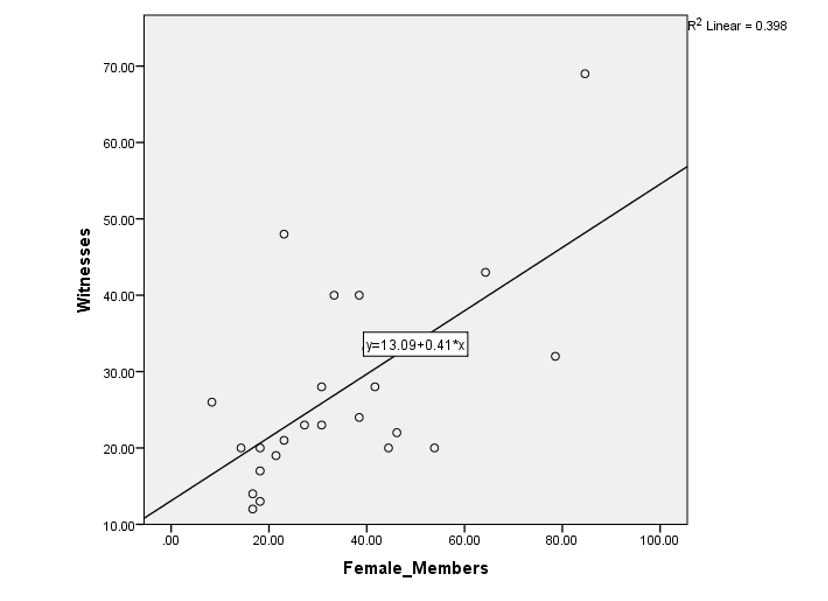
FIgure 2: Percentage of female non-discretionary witnesses versus percentage of female select committee members
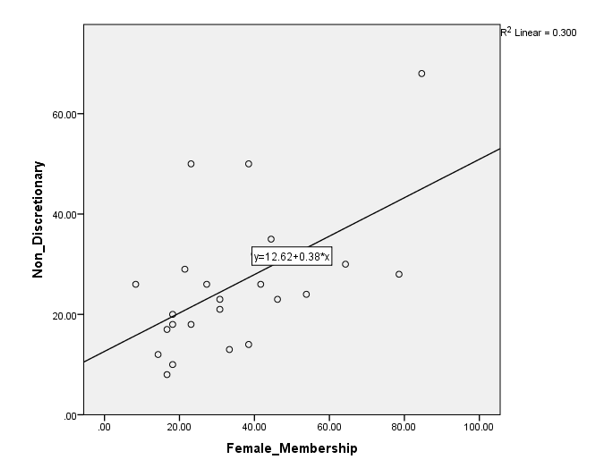
Figure 3: Percentage of female discretionary witnesses versus percentage of female select committee members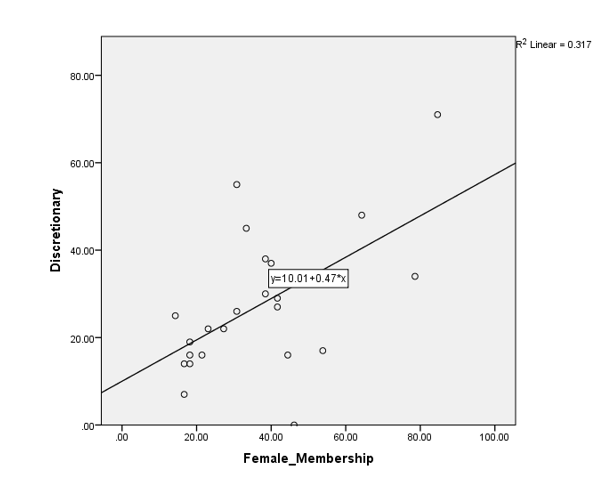
Of course, the proportion of female members of a select committee changes, sometimes significantly, between parliamentary sessions. However, if we use a 7-point scale of the female- or maleness of a committee that takes into account gendered membership patterns over a thirty-year period from 1979 to the present[2], then similar findings emerge: there is some evidence for a moderate correlation between the female- or maleness of a committee’s membership over time and the percentage of: (i) all female witnesses (rs(23)=.522, p<.01; see Figure 4); and (ii) discretionary female witnesses (rs(21)=.571, p<.01; see Figure 5) for that committee during the 2015–16 session[3].
Figure 4: Percentage of female witnesses versus female-/maleness of select committee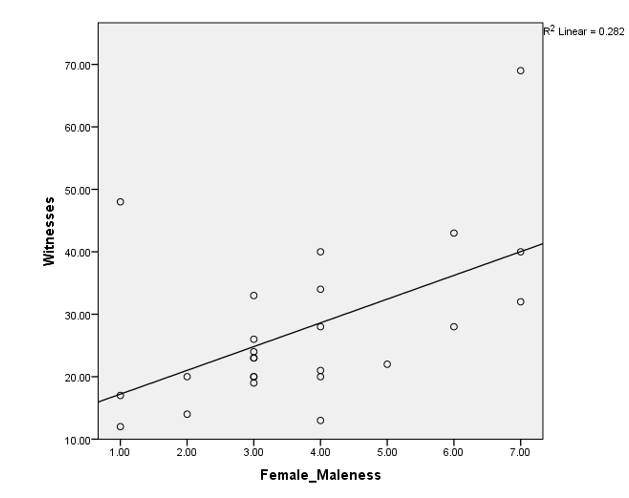
Figure 5: Percentage of female discretionary witnesses versus female-/maleness of select committee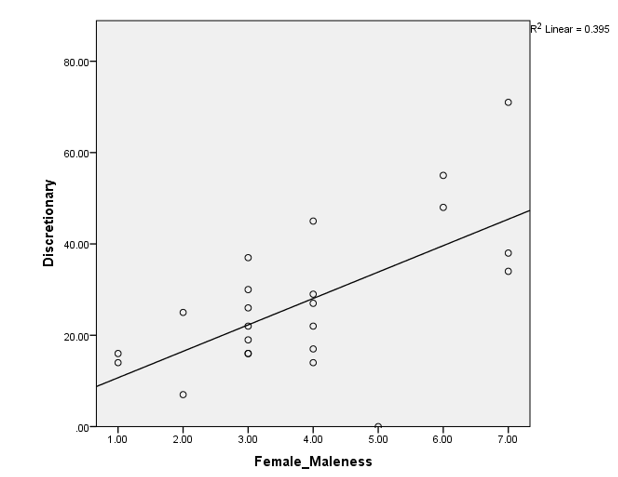
What does all this mean?
We’re not, of course, suggesting that differences in the proportion of female committee witnesses are driven entirely by gendered membership patterns. For instance, the role of clerks in the process of choosing witnesses is important. Furthermore, select committees face a number of other constraints in choosing witnesses, such as the overriding importance given to political balance of evidence and calling time-pressured inquiries. Moreover, select committees cannot do anything – on their own and in the short-term at least – about the gender balance of non-discretionary witnesses, nor, indeed, about the gender balance of people working and/or researching in the policy areas under the select committee’s purview. While problematic, it is perhaps not surprising that the Education committee would have a higher proportion of female witnesses than the Defence committee given what we know about the spread of men and women across the workforce.
Yet, taking into account these broader contextual features, it remains the case that it is more than possible that the current and long-term gendered patterns of committee membership are having some effects on the gender balance of witnesses and that this effect may be institutionalised. This means that, while the official target of having at least 40% of female discretionary witnesses may well be reached by the end of this Parliament – if it runs until 2022, that is! – a more worrying gendered pattern at the individual committee level will almost certainly remain and which will be less easy to resolve.
So what can be done?
One suggestion for improving the proportion of female witnesses still further could be for Parliament to turn attention more directly towards individual committees rather than the committee system as a whole. In addition to transparency and discouraging all-male panels, MPs may want to consider gender quotas for witnesses for each select committee (and, indeed, gender quotas for committee membership concomitant with female presence within the House of Commons as a whole). This would not only deal with the uneven spread of female witnesses across the select committee system but also, perhaps more importantly, help to dismantle current gendered policy areas and expertise within Parliament and beyond.
[1] This session is the only one where complete data is easily available for both witnesses and select committee membership. From 2016–17 onwards, Parliament has not collected and published committee membership data in the Sessional Returns as it has done previously and some committees are very tardy and slapdash in publishing this data themselves. The Select Committees included in this analysis are: Business, Innovation & Skills; Culture, Media & Sport; Defence; Education; Energy & Climate Change; Environment, Food & Rural Affairs; Environmental Audit; Foreign Affairs; Health; Home Affairs; International Development; Justice; Northern Ireland Affairs; Petitions; Procedure; Public Accounts; Public Administration & Constitutional Reform; Science & Technology; Scottish Affairs; Transport; Treasury; Welsh Affairs; Women & Equalities; and Work & Pensions.
[2] This scale has been developed by Goodwin, Holden Bates & McKay for on-going, hopefully-soon-to-be-published work on the gendered nature of Select Committees. The seven points on the scale are: Very Strongly Disproportionately Male; Strongly Disproportionately Male; Disproportionately Male; Mixed; Disproportionately Female; Strongly Disproportionately Female; and Very Strongly Disproportionately Female. Please email us for a draft paper that sets out the scale in more detail if you want to know more.
[3] We also tested to see whether there was a correlation between the gender and the party of the committee chair and the percentage of female witnesses for their committee but there was no evidence of a correlation between these factors.
This post represents the views of the authors and not those of Democratic Audit. It was first published on the PSA’s Parliaments and Legislatures blog, and is reposted with permission.
About the authors
Marc Geddes is Lecturer in British Politics at the University of Edinburgh with research interests in everyday practices in the House of Commons and how legislatures interact with different forms of knowledge.
Mark Goodwin is Lecturer in Politics at Coventry University with research interests in the UK Parliament, select committees and British public policy.
Stephen Holden Bates is a Senior Lecturer at the University of Birmingham with research interests in parliamentary power and select committee effectiveness.
Steve McKay is Professor of Social Research at the University of Lincoln with research interests in social policy and quantitative methodologies.
And
Isaac Bates (aged 8¾), who is a Bluenose with interests in Lego, Harry Potter, cycling, football and occasionally helping his Dad with data collection.
Notes
The authors wish to thank Barbara Barratt and Alice Welham for the stats chats.





 Democratic Audit's core funding is provided by the Joseph Rowntree Charitable Trust. Additional funding is provided by the London School of Economics.
Democratic Audit's core funding is provided by the Joseph Rowntree Charitable Trust. Additional funding is provided by the London School of Economics.
Have you considered quotas for article authors?